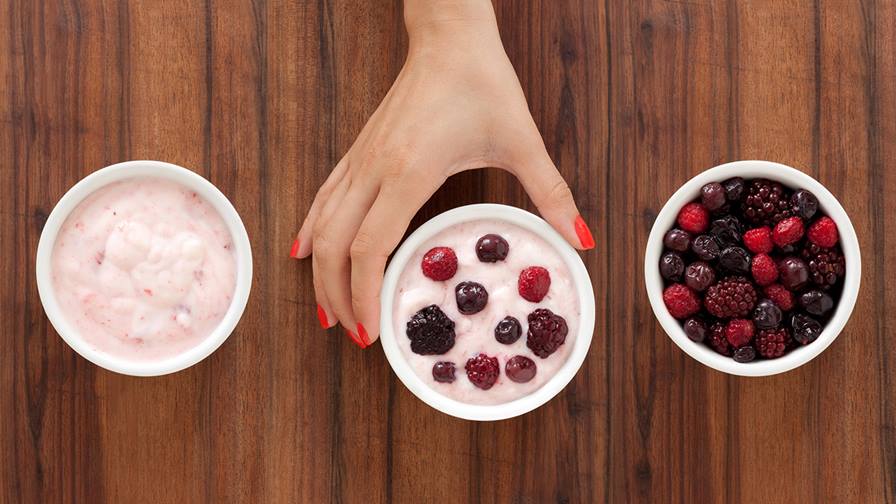How To Not Get A Yeast Infection While On Antibiotics

If you prefer to listen to this article, click on the SoundCloud player below.
About 75% of women will experience a vaginal yeast infection sometime in their life, and up to 45% of those women will have repeat yeast infections. That's a daunting prospect if you've had one before —it's not something you want to do again. Thankfully, you can make lifestyle and diet changes to prevent a yeast infection.
Symptoms of a yeast infection
A vaginal yeast infection can be a miserable experience. Symptoms typically include:
- Redness, swelling, and itching in and around your vaginal opening
- Vaginal pain
- Watery or thick discharge that looks like cottage cheese
- Burning sensation while urinating or during intercourse
Causes of a yeast infection
Many things can cause a yeast infection. Some of the common causes of vaginal yeast infections include:
- Uncontrolled diabetes. High amounts of sugar in your body can feed yeast in your vagina. Once you get your diabetes under control, the bacteria in your body should follow suit.
- Antibiotics. Because antibiotics kill both good and bad bacteria, you're more likely to get a yeast infection while taking them. If you get recurrent yeast infections, let your doctor know if they're considering prescribing an antibiotic. They may be able to help.
- Sex. You can pass a yeast infection to your partner during sex, so communicate clearly with your partner before engaging in intercourse.
- Hormones during pregnancy, menopause, or breastfeeding can change the bacterial balance in your vagina.
- Immune system disorders may let yeast grow uncontrolled in your body.
- Products like vaginal sprays or douches can change the balance of bacteria in your vagina.
Being aware of the causes of a yeast infection can often help to head them off before symptoms begin. For example, if you know you'll be taking antibiotics, also take probiotics. This can help keep the bacteria in your vagina balanced.
Diet for a yeast infection
The foods you eat may be contributing to your recurring yeast infections. Yeast loves sugar. Avoiding the following foods (also known as a Candida diet) can curb the growth of yeast in your body.
- White flour and rice
- Foods or drinks fermented with yeast
- Foods made up of simple sugars
Although avoiding these foods may help you avoid a yeast infection, this diet can be difficult to maintain. Fortunately, you may not need to completely eliminate these foods to see positive effects in the number or severity of yeast infections you get. Cutting back in small amounts may help.
It may also help to increase your intake of healthy proteins and fats and increase your intake of low-starch fruits and vegetables. Eating a low-sugar diet doesn't mean you have to go hungry; you just need to eat more from other food groups.
Probiotics might help
Certain bacteria occur naturally in your digestive tract, on your skin, and in other parts of your body. When you get a yeast infection, your body's natural bacteria have gotten out of balance. Consuming probiotics can help to balance the good bacteria in your body. Good sources for probiotics are:
- Yogurt with live bacterial cultures
- Fermented foods such as kimchi, kefir, kombucha, sauerkraut, and pickles
- Supplements containing lactobacillus or acidophilus
Some women have success in preventing and treating yeast infections when they consume yogurt (or a probiotic supplement) regularly.
Lifestyle changes for preventing yeast infections
You can do several other things – beyond dieting – to help prevent yeast infections. In fact, good genital hygiene is one of the best ways to prevent this type of infection. This includes:
- Keep things clean. Use mild, unscented soap and water to keep your vaginal area clean.
- Choose the right underwear. Your underwear should keep your genital area dry. Cotton underwear is a good choice. Sleeping without underwear can also help.
- After using the bathroom, wipe from front to back to avoid spreading yeast or bacteria between your anus, urinary tract, or vagina.
- Don't wear swimsuits longer than necessary. Wearing a wet swimsuit will foster the spread of yeast because it keeps things warm and wet.
- Don't wear tight clothes. Tight-fitting clothing also keeps your genitals warm and moist.
- Change tampons and pads regularly.
- Avoid douches and any kind of perfumed sprays, powders, or tampons.
When to see a doctor?
Even with all of your preventive efforts, you can still get a yeast infection. So when should you see a doctor? You should consider making an appointment if:
- You're experiencing a yeast infection for the first time
- Your symptoms don't go away after using over-the-counter antifungal vaginal creams or suppositories
- You're not sure if you have a yeast infection
- You develop unrelated symptoms
- You have recurrent yeast infections regardless of any preventive efforts
How To Not Get A Yeast Infection While On Antibiotics
Source: https://intermountainhealthcare.org/blogs/topics/live-well/2018/03/preventing-vaginal-yeast-infections-with-lifestyle-and-diet-changes/
Posted by: burchpardisturn.blogspot.com

0 Response to "How To Not Get A Yeast Infection While On Antibiotics"
Post a Comment